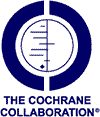Best practice portal main page
Virtual Reality to reduce craving in substance use disorders
Summary of the evidence
Virtual Reality was found in a narrative systematic review (Segawa et al., 2020) to have heterogenous results and no conclusive effect in:
- reducing craving (studies focused on nicotine, cocaine, alcohol, cannabis, gambling)
However the same review found VR applications to be an effective alternative to in-vivo techniques in triggering cue-reactivity in adult individuals in both substance use disorders and behavioural addictions. In addition, the authors concluded that including coping mechanisms to VR-based interventions may add efficacy in terms of craving reduction.
Virtual Reality is identified in the review as a Human-Computer Interaction platform based on immersive simulations of realistic environments.
A more recent narrative systematic review (Taubin et al., 2022, 5 studies, focus on tobacco) assessed the effect of virtual reality therapies on substance use disorder and arrived at the same conclusions:
- no clear evidence of effect in reducing craving, mood outcomes, anxiety and depression.
Details
Note: this evidence summary is only valid for the outcomes, target groups, settings and substances/patterns of use described below.












